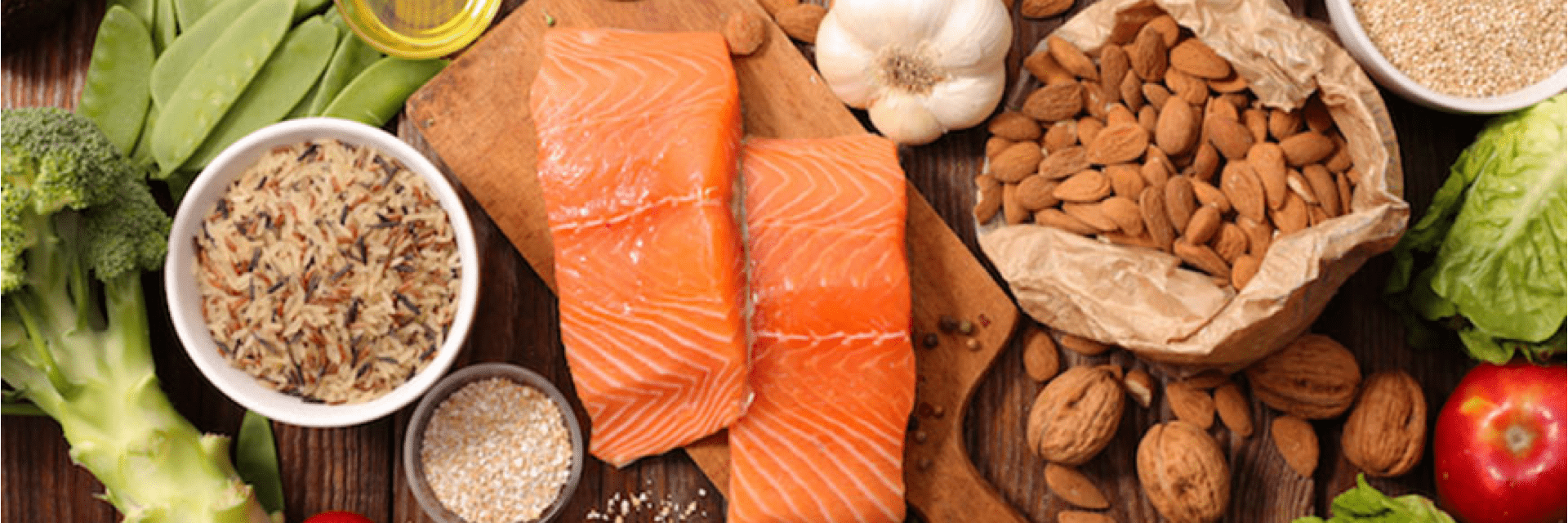An omega-3 foods list to help you revamp your diet this month
EPA & DHA omega-3 foods
Oily fish are a great place to look when you’re trying to incorporate more foods high in omega-3 into your diet, as they contain EPA and DHA, which are types of omega-3 that help with the normal functioning of the heart. This is one of the reasons why it’s recommended that we eat at least one portion of these fish a week.
Salmon
Salmon, with its delicate, fresh flavour, is a popular oily fish. While it offers 1.6g of EPA and DHA omega-3 per 85g portion, it’s worth remembering that salmon is also a delicious source of protein, making this pretty pink fish a great replacement for fatty meat with lots of saturated fat in a meal. Click here for our latest smoked salmon recipes.
Mackerel
Another oily fish on our omega-3 foods list, mackerel fillets are delicious in salads, pasta bakes and even fish cakes. A rich and bold addition to a plate, mackerel are even brilliant simply grilled with a drizzle of lemon. And with 2g of combined EPA and DHA omega-3 per 85g fillet, they’re a great choice for a heart-friendly diet. Click here for mackerel recipes.
Herring
Another delicious oily fish, this time containing 1.41 EPA and DHA combined in an 85g portion. Fresh herring can be poached or grilled, while some prefer pickled or smoked herring – but whatever way you choose to eat it, you’re in for a treat. With a rich taste similar to mackerel, herring is well-complimented by a little sharpness: classic recipes often use lemon and dill.
ALA omega-3 foods
The foods below contain a type of omega-3 fatty acid that’s different to those in fish: ALA, alpha-linolenic fatty acid. ALA contributes towards the maintenance of cholesterol levels when we eat 2g daily.
Walnuts
It may be surprising, but these little nuts are nutritional powerhouses, and come highly recommended on the list of foods high in omega 3 fatty acids. There’s around 2.5g of ALA in 100g of walnuts – that accounts for around 3-4 portions, though, so bear in mind that you may have to team walnuts up with another source of ALA omega-3 to get the recommended amount. Click here for a tasty recipe with walnuts.
Chia seeds
As well as walnuts, chia seeds can be a good place to turn when you’re looking for omega-3 rich foods. 1 portion (28g) of dry chia seeds contain a whopping 5g of ALA. If you’re not a fan of the newly-trendy chia pudding (where dry chia seeds are soaked in fruit juice or a skimmed milk drink until they form a dish similar to tapioca or rice pudding), try adding them to smoothies, porridge, or sprinkling them on top of salads.
Linseeds & linseed oil
Also known as flaxseed, linseed is a good source of ALA omega-3. While it’s perfectly fine to eat whole linseeds, ground linseed and linseed oils are more easily digestible, and thought to be a better way to get at their nutritional content. Cold pressed linseed oil contains 7.3g ALA per tablespoon (14g), while ground linseeds contain 3.2g ALA per two tablespoons (also 14g). Try cooking with the oil, or adding the ground seeds to your baking, smoothies, or porridge.
Your omega-3 RDA
Global organisations differ slightly on the omega-3 RDA (recommended daily allowance) for adults, and tend to focus on EPA and DHA. Here in the UK, it’s recommended that we eat one meal containing oily fish a week; European guidelines state that the benefits mentioned earlier are within reach with an omega-3 RDA of 250mg of EPA and DHA combined a day or 2g of ALA.
Want to find out more? Check out our article on the benefits of omega-3 here. If this list of omega-3 foods has you inspired to pursue a heart-friendly lifestyle, check out the ProActiv Cholesterol Lowering Starter Kit. It will offer you top tips on ways to help maintain heart health by lowering cholesterol with small, simple changes.
*A daily intake of 2g ALA omega-3 can contribute to the maintenance of normal blood cholesterol levels. A daily intake of 2.5g EPA and DHA omega 3 combined can contribute to the normal function of the heart. High cholesterol is a risk factor in the development of coronary heart disease. As coronary heart disease has many risk factors, more than one may need to be improved to reduce the overall risk.

